|
|
Home →
Survival →
Fire →
Tinder →
Tinder Fungus
Bush Fungus Stove
by Allan "bow" Beauchamp |
| |
| On this. particular outing, it was a very wet day; and
as all of you know, starting a fire in wet conditions is not an easy
task. I was looking forward to a cup of tea. I was venturing through a
swamp, but as the weather was not in my favor, I thought that I would
have to wait. As I walked along, I remembered an article that I had
written entitled, "Knife and Stone Fire
Starting". I wondered how I could change those components and apply
them to what I wished to do now.
Well, I Came Up with a Great Idea! |
|
|
|
Photo 1
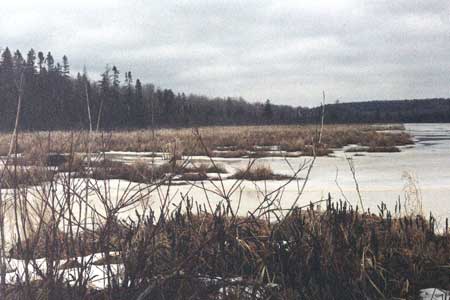 |
As you look at Photo 1,
you will get a better understanding of where I was. The
grayness you see is actually moisture in the air. It was
between the seasons when the snow was also leaving the area,
and the ground was very saturated with water. Not the best
combinations for getting a good fire going. |
|
|
|
|
Photo 2
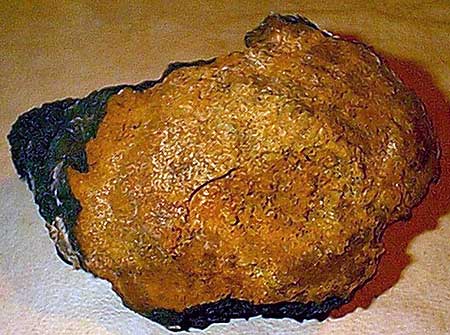 |
First, I had to venture through the swamp in search of some tinder. I
found an "old friend" -- some birch tinder fungus. I have used this type
of fungus for many applications that I call "options." When you harvest
this birch fungus, it will appear as you see it in Photo 2. It
shows the side that will face the tree, the inner fungus side.
If you have white birch or yellow birch in your area, it should be
fairly easy to find. However, your topography might not have birch
trees, so try to find something else of the same texture, and
characteristics that will accomplish this task. This is where the
learning curve comes in. Get outdoors, venture around in your area, and
look for "options" as I have. |
|
|
|
|
Photo 3
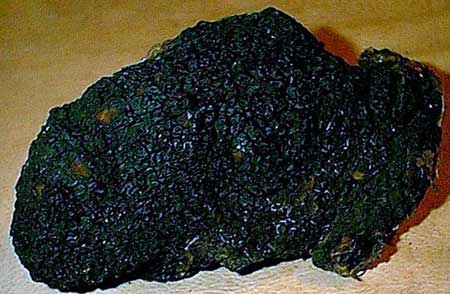 |
Photo 3 shows the side that you will see when you are walking
through the bush. It will have a distinct black appearance that you will
not be able to mistake for something else. This blackness will be very
coarse. I have found many different types of this fungus. Where they
are harvested does make a difference. I discussed more about these fungi
in my article called "Two
Stone Fire Starting".
|
|
|
|
|
Photo 4
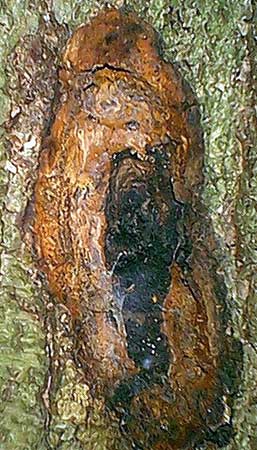 |
Pictured in Photo 4 is a yellow birch tree where I harvested this
piece of fungus. Remember, when you remove such a big piece from the
tree, it is always a good idea to collect some sap and fill in the
wound. If you take something from the earth, try to add back to the
resource. |
|
|
|
|
Photo 5
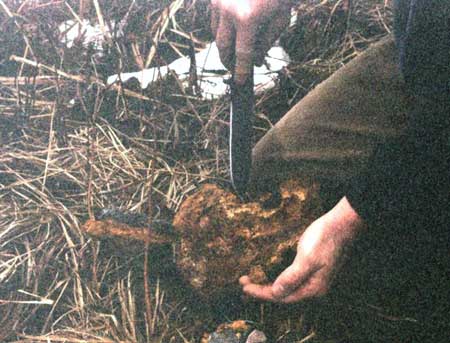 |
Now that I had found the fungus that I needed, I crouched down behind a
beaver bank that would shelter me from the north wind. As luck would
have it it started to rain just as I was starting to get things going.
If you notice my pants leg in Photo 5, you can see the water
starting to absorb into my clothing. The setting for this experiment
was a good trial for my bush fungus stove -- it would either work or
fail!
|
|
|
|
|
Photo 6
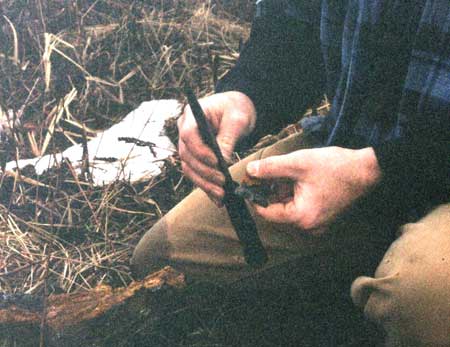 |
In Photo 6, you can see my preferred method of fire
starting for this particular day. I call it my "knife and
stone fire starting method." I used my knife, and in this
case, a piece of flint that I had with me. I struck the
flint with the back edge of my knife against the stone to
create a spark. |
|
|
|
|
Photo 7
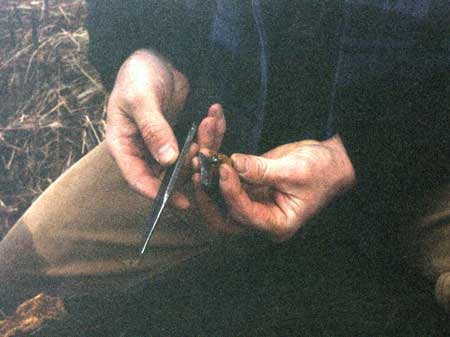 |
Once the spark was caught in
the tinder, Photo 7, I continued to assist it until I
felt it was ready to transfer it to the fungus. Photo 8. |
|
|
|
|
Photo 8
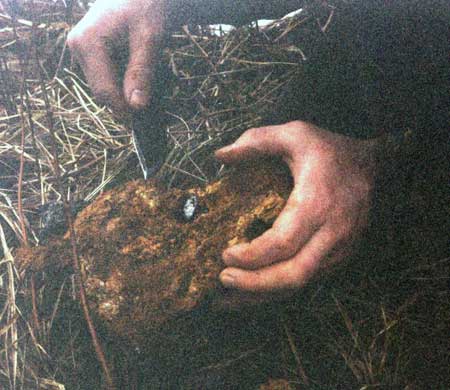 |
Tip: I always like to prepare the fungus before I place
the coal into it. Dig a small hole the size of the tinder, and use a
knife to break it up. This allows the tinder to transfer its heat rather
quickly from one source to another. Some fungi are better at accepting
the tinder than others-some are damp, some are too dry, and some fungus
pieces really need some coaxing to get the tinder to stay lit. It is not
always an easy task.
|
|
|
|
|
Photo 9
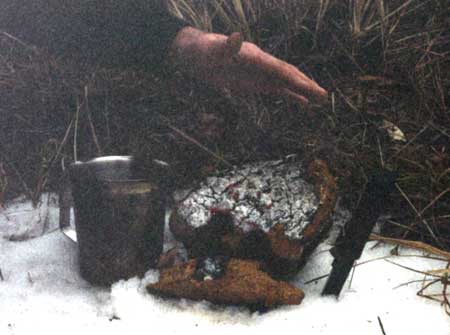 |
Try to coax the tinder to catch in the fungus as soon as possible.
Blowing on it will help to let it spread. Do not let just one part get a
lot of heat, as it will burn down and not laterally. You are trying to
allow it to burn more laterally; then, burn deeper. This way it will use
the fungus more evenly, and burn longer as a whole piece. Photo 9.
The piece shown in front of the fungus has not been coaxed to spread
laterally. It will burn more slowly and deeper before it ever evens out.
The back piece shows the evenness that you would like to accomplish. The
upper piece in the photograph shows the evenness that you would like to
accomplish. |
|
|
|
|
Photo 10
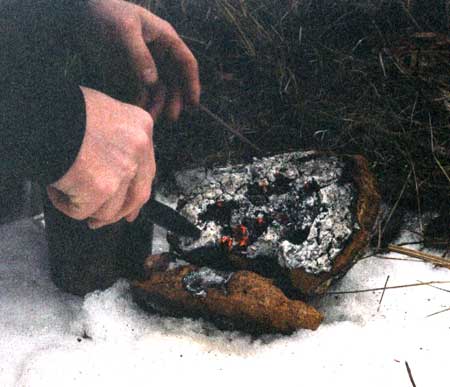 |
Stirring up the fungus will also help to make it burn
deeper as a whole. In other words, to spread it evenly.
Photo 10. This will increase the temperature of your
cooking pot considerably, distributing the heat against the
surface. Be especially careful at this stage, because it
does get hot. |
|
|
|
|
Photo 11
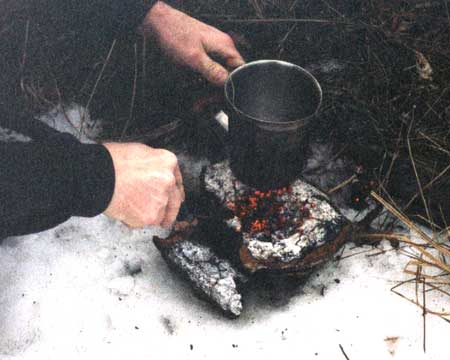 |
Once it has started burning evenly it is time to place your pot on top
of it. Photo 11 gives you a good idea of the size of my fungus
stove, as compared to my all-in-one pot. At this point, I used my
knife to form a holder for my pot to sit on. It would be of no use to me
to put a pot on a fungus stove only to have the water spill out of it
and put the fire out.
|
|
|
|
|
Photo 12
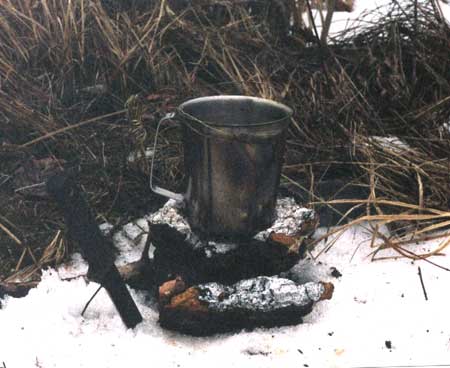 |
Photo 12 shows how stable the pot will sit on the fungus stove.
If the stove is left out in the open too long, it will burn down more
quickly than if it is sheltered. If you are fortunate in making a fungus
stove, try to get the most from it.
|
|
|
|
|
Photo 13
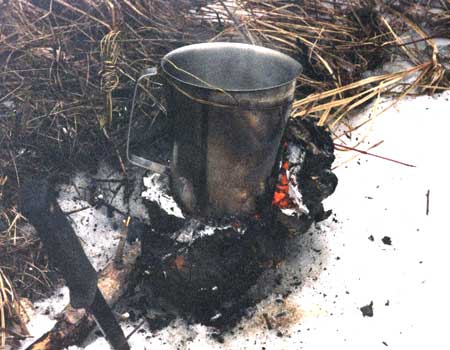 |
Photo 13 shows that the fungus stove has been burning for some
time, as the pot is lower in the fungus. You can see that the heat has
stayed within the walls of the fungus. This is good, because it will
maintain a constant heat -- it will not burn down too fast. Even on a
day that is not so perfect and with the moisture playing on the fungus,
the walls will not saturate with water very easily. This allows for a
longer burning time. This particular piece of fungus has been burning
over an hour! |
|
|
|
|
Photo 14
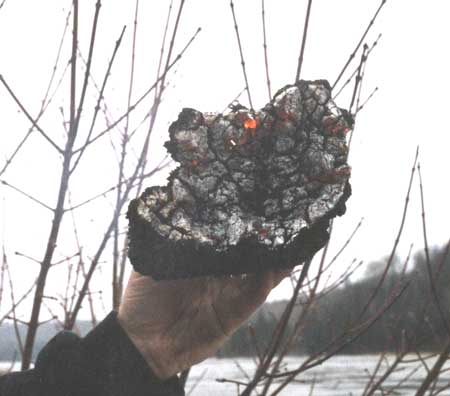 |
My fungus stove has proven to be a valuable tool. It has accomplished
everything that I initially set out to do. The fungus stove is still
burning hot after it has finished boiling my water. Photo 14. It
has been burning for quite some time, and was still capable of keeping
my wet hands warm. |
|
|
|
|
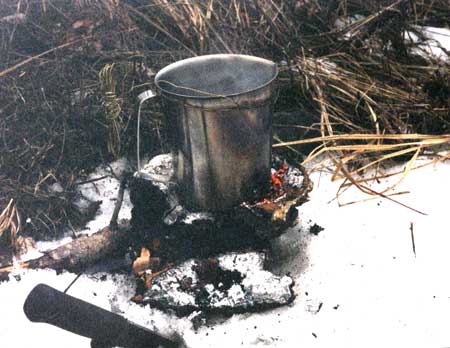
|
There is never just one way to do anything -- there is just always a
better way. It is up to you to venture out and explore all of your
"options." Think of all of the things that I had to try before I
accomplished this task Would you have thought of such a solution? This
tinder fungus stove has worked well for me, but perhaps it would not
have worked in your area. You might even find a better way to make a
small stove.
|
|
|
|
|
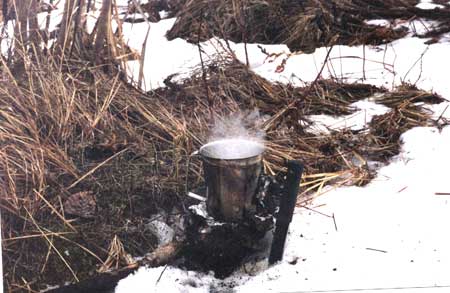
|
If you take the time to listen to nature, it will indeed help you. |
|
| |
|
All photographs and
written content Copyright ©
by Allan Beauchamp.
This article originally appeared in Wilderness Way magazine, Volume 8,
issue 2. Reproduced here with permission of the author. |
|
|
|
|